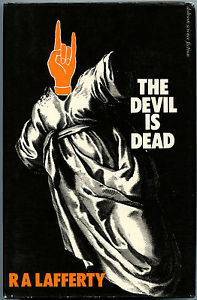What do you think?
Rate this book


224 pages, Hardcover
First published May 1, 1971
A night-dune imaginary: there was a world full of people with pumpkin-heads for heads, and candles burning inside. Then Seaworthy and the Devil and their spooky crew came along, lifted the top off each head, blew out the candles inside and put the tops back. The pumpkin-headed people seemed to get along about as well as before; yet there was a difference.
